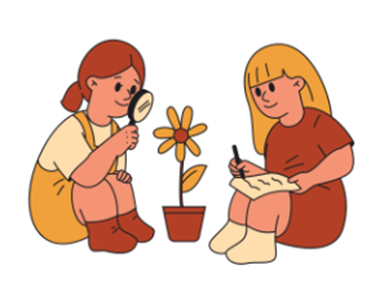Lisa Bortolotti and Kathleen Murphy-Hollies (2023) offer an extensive and thoughtful treatment of how curiosity can be a virtue in healthcare, especially within the physician–patient relationship. They describe curiosity as a disposition to attain new information, with it manifesting as a moral virtue when it helps one to view others as speakers with a valuable perspective. Importantly, they argue that when curiosity is directed towards the experiences of others, it becomes a form of caring, encouraging one not to dismiss the experiences of others.
 |
| Girls being curious about botany |
Curiosity in Healthcare
Curiosity may thus have a crucial role to play in healthcare, “opening us to questions and, if fortunate, knowing more deeply both patient and disease” (p. 138). It may help physicians to practice a more patient-centered care and to ensure that the perspectives and experiences of patients are not lost or dismissed even when views differ. Moreover, it may be particularly fruitful in situations where testimonial injustice is common, such as the doubting or discrediting of a patient’s pain, or the disbelieving of female reproductive symptoms.However, it is also important for physicians to not stray into inappropriate curiosity, which can take the form of question-asking solely to satisfy the personal interest or curiosity of the physician. This inappropriate curiosity can lead to patients being subjected to intrusive questions irrelevant to their medical care, or breaches of privacy and the violation of patient confidentiality.
Barriers to Curiosity and Ways Forward
Although it may play a valuable role, several barriers may prevent or hinder the practice of curiosity in healthcare. Practically, the decreasing time for physician–patient encounters presents a logistical barrier—to what extent can one exercise curiosity in another’s life within the short span of 5 to 10 minutes?Another obstacle to the cultivation of curiosity is what Martyn Evans calls the “foreseeable, unremitting, and unsung”” (p. 125). These, for a physician, may be patients with unremarkable or routine symptoms and stories that provoke little surprise. In these situations, “curiosity is dulled by familiarity”. However, even if medically unremarkable, such patients are still deserving of sustained moral attention. To combat this, , Evans proposes adopting an attitude of openness to wonder, potentially allowing a physician to see the patient in a new and extraordinary light, and thereby facilitating the exercise of curiosity.
 |
| People looking quizzical |
Overconfidence and a lack of epistemic humility can also be an obstacle to curiosity, as physicians may sometimes be reluctant to acknowledge uncertainty or ignorance to their patients or peers. For this, medical education and institutions can help by emphasizing a culture of curiosity, and fostering an environment where physicians can constantly learn and adopt the perspectives of others, even post-graduation.
With these obstacles in mind, working towards the practice of curiosity in healthcare may contribute to broadening one’s perspectives and contribute to a more empathetic and well-rounded practice of medicine that includes the experiences of all.
With these obstacles in mind, working towards the practice of curiosity in healthcare may contribute to broadening one’s perspectives and contribute to a more empathetic and well-rounded practice of medicine that includes the experiences of all.
 |
| Katherine Cheung |
Katherine Cheung is a PhD student in Bioethics and Health Policy at Johns Hopkins, and previously worked as a Health Science Policy Analyst on data sharing, stationed with the NIH. Her current work focuses on bioethical issues related to psychedelics, such as the value of the psychedelic experience and the place of meaningfulness in medicine.
No comments:
Post a Comment
All comments are moderated.